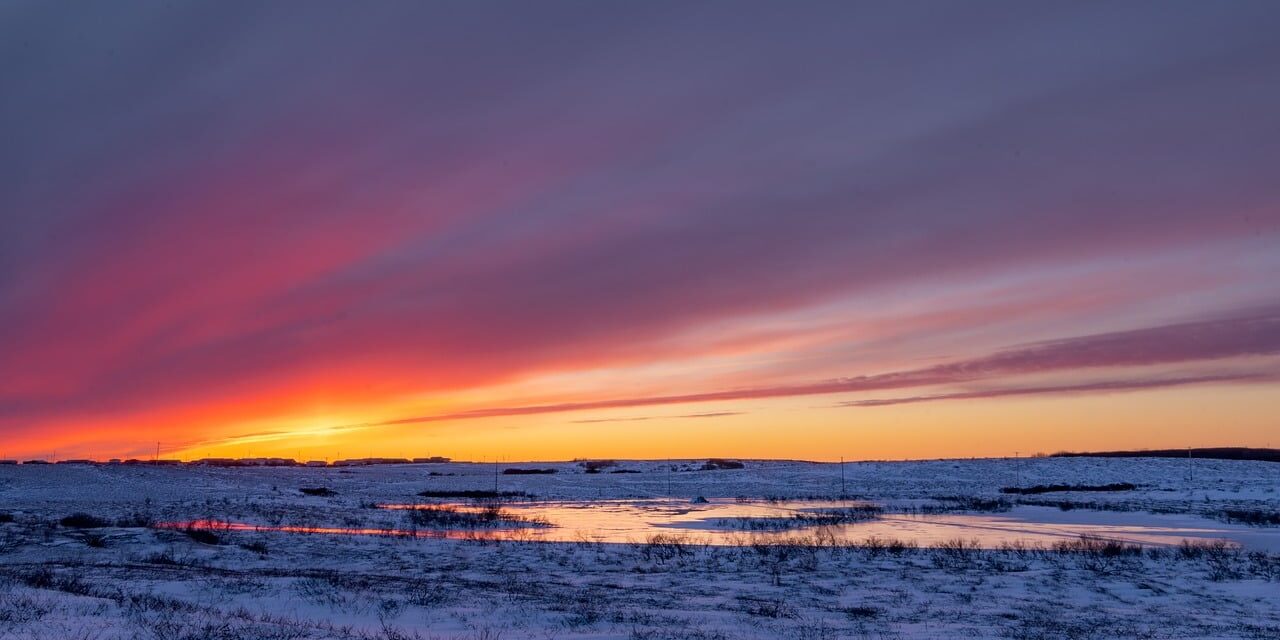The state of Alaska, with its vast wilderness and unique cultural heritage, has a rich and multifaceted history.
From its early indigenous roots and Russian colonization to its purchase by the United States and eventual statehood, Alaska has played a significant role in American history.
Below, we explore Alaska’s fascinating history, covering its foundation, key historical events, and notable landmarks.
Table of Contents
Early History
Indigenous Inhabitants and European Exploration
Before European settlers arrived, Alaska was home to various Native American tribes, including the Iñupiat, Yupik, Aleut, Tlingit, Haida, and Athabascan peoples.
- These tribes had established societies with rich cultures, subsistence lifestyles, and trade networks.
- Europeans first explored the area in the early 18th century, notably by Russian explorers such as Vitus Bering in 1741.
The indigenous peoples and early European explorers laid the groundwork for future settlements.
Russian Colonization
Russian exploration and colonization began in the mid-18th century.
- Russian fur traders established settlements, most notably at Kodiak Island and later Sitka, which became the capital of Russian America.
- The Russian-American Company, founded in 1799, controlled the fur trade and established trade relations with other nations, including Spain and China.
The Russian period saw cultural exchanges and conflicts with indigenous populations, leading to significant demographic changes.
Alaska Purchase
In 1867, the United States grew by purchasing Alaska from Russia for $7.2 million, a transaction often referred to as “Seward’s Folly” after U.S. Secretary of State William Seward, who negotiated the deal.
- The purchase added 586,412 square miles of territory to the United States, rich in natural resources.
- Initially, the purchase was met with skepticism, but it soon proved valuable due to discoveries of gold, oil, and other minerals.
The Alaska Purchase marked a significant expansion of U.S. territory and strategic interests.
Key Historical Events
Gold Rushes
Alaska experienced several gold rushes in the late 19th and early 20th centuries.
- The Klondike Gold Rush of 1896-1899 brought thousands of prospectors through Alaska to Canada’s Yukon Territory, who were using dog sledding as a form of transportation.
- Subsequent gold discoveries in Nome and Fairbanks spurred further migration and development.
These gold rushes were crucial to Alaska’s economic and population growth.
World War II
During World War II, Alaska’s strategic importance was highlighted.
- The Japanese occupied the Aleutian Islands of Attu and Kiska in 1942, leading to the only battles fought on American soil during the war.
- The construction of the Alaska Highway in 1942 improved military and civilian access to the territory.
World War II underscored Alaska’s strategic military significance and led to increased federal investment in infrastructure.
Statehood
Alaska was admitted as the 49th state of the United States on January 3, 1959.
- The push for statehood was driven by a desire for greater political representation and control over local resources.
- President Dwight D. Eisenhower then signed the Alaska Statehood Act, culminating years of advocacy by Alaskans.
Statehood marked a new chapter in Alaska’s political and economic development.
Notable Landmarks
Denali National Park
Denali National Park is home to Denali (formerly Mount McKinley), the highest and tallest peak in North America.
- The park covers over six million acres and offers stunning landscapes, wildlife viewing, and outdoor recreation.
Denali National Park is a symbol of Alaska’s natural beauty and wilderness.
Sitka National Historical Park
This park preserves and protects the site of the Battle of Sitka (1804) and celebrates Alaska’s Tlingit culture and Russian heritage.
- The park features totem poles, historic buildings, and beautiful trails.
Sitka National Historical Park highlights Alaska’s cultural diversity and historical significance.
The Iditarod Trail
The Iditarod Trail, famous for the annual sled dog race, follows a historic route used during the gold rushes.
- The race commemorates the 1925 serum run to Nome, which delivered diphtheria antitoxin during an outbreak.
The Iditarod Trail symbolizes Alaska’s pioneering spirit and rugged endurance.
Governance
State Government
Alaska operates under a constitution adopted in 1956.
- The state government consists of the Executive, Legislative, and Judicial branches.
- The governor, currently Mike Dunleavy, serves as the head of the executive branch.
The state government works to address the unique needs of its diverse and expansive territory.
Local Government
Alaska’s local government structure includes boroughs and cities.
- Each level of government has specific responsibilities for services such as education, public safety, and infrastructure.
- Local governance ensures that the diverse needs of Alaska’s communities are met.
Effective local governance contributes to the overall well-being of the state’s residents.
Demographics and Growth
Population
As of the 2022 census estimates, Alaska’s population was 733,583. The state’s demographic makeup includes a significant proportion of Alaska Natives, reflecting its rich indigenous heritage.
Diverse demographics and steady growth reflect Alaska’s appeal as a place to live and work.
Economy and Natural Resources
Alaska’s economy is driven by natural resources, including oil, gas, fishing, and tourism.
- The Trans-Alaska Pipeline System, completed in 1977, is a critical infrastructure project transporting oil from Prudhoe Bay to Valdez.
- Alaska’s vast natural resources continue to play a vital role in its economy and provide significant revenue through resource extraction.
These factors contribute to the state’s economic resilience and cultural vibrancy.
State of Alaska Q&A
Q: When was Alaska purchased by the United States?
A: Alaska was first initially purchased from Russia in 1867 for $7.2 million. The transaction, known as “Seward’s Folly,” was initially controversial but proved valuable due to the territory’s rich natural resources.
Q: Who were the original inhabitants of Alaska?
A: The original inhabitants of Alaska were various Native American tribes, including the Iñupiat, Yupik, Aleut, Tlingit, Haida, and Athabascan peoples. These tribes had established societies with rich cultures, subsistence lifestyles, and trade networks.
Q: What role did Alaska play during World War II?
A: During World War II, Alaska’s strategic importance was highlighted when the Japanese occupied the Aleutian Islands of Attu and Kiska in 1942. The construction of the Alaska Highway improved military and civilian access to the territory.
Q: What are some notable historical landmarks in Alaska?
A: Denali National Park, Sitka National Historical Park, and the Iditarod Trail used for the Iditarod dog sled race are notable landmarks. These sites highlight Alaska’s natural beauty, cultural diversity, and historical significance.
Q: How is Alaska governed?
A: Alaska operates under a 1956 constitution, with an Executive, Legislative, and Judicial branch. The governor is the head of the executive branch, and boroughs and cities manage local governance.
Q: What is the current population of Alaska?
A: As of the 2022 census estimates, Alaska’s population was 733,583. The state continues to attract residents with its diverse culture, educational opportunities, and economic resilience.
Alaska’s dynamic history and commitment to preserving its natural and cultural heritage make it a unique and vibrant state.
By maintaining its historical landmarks and fostering growth in new industries, Alaska continues to honor its past while looking forward to a prosperous future.





